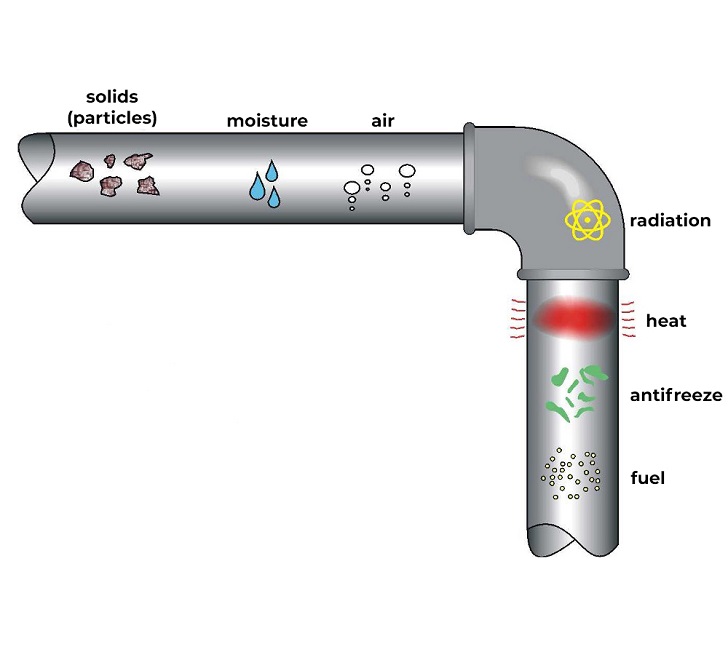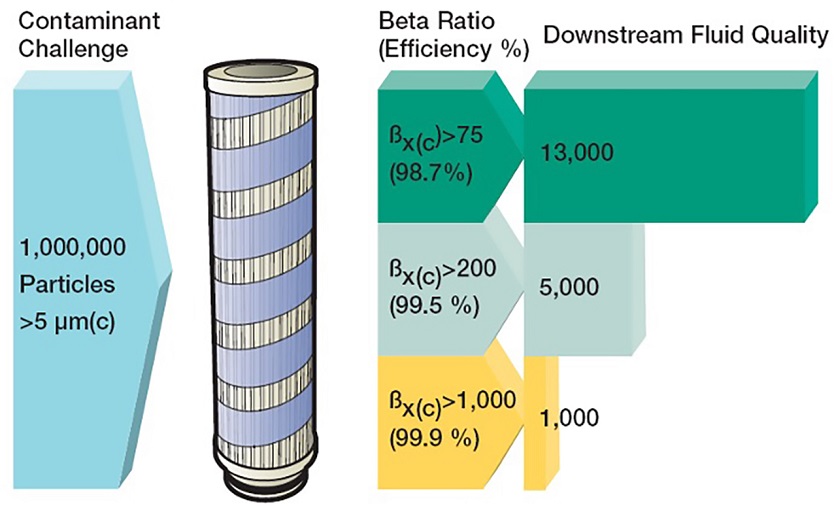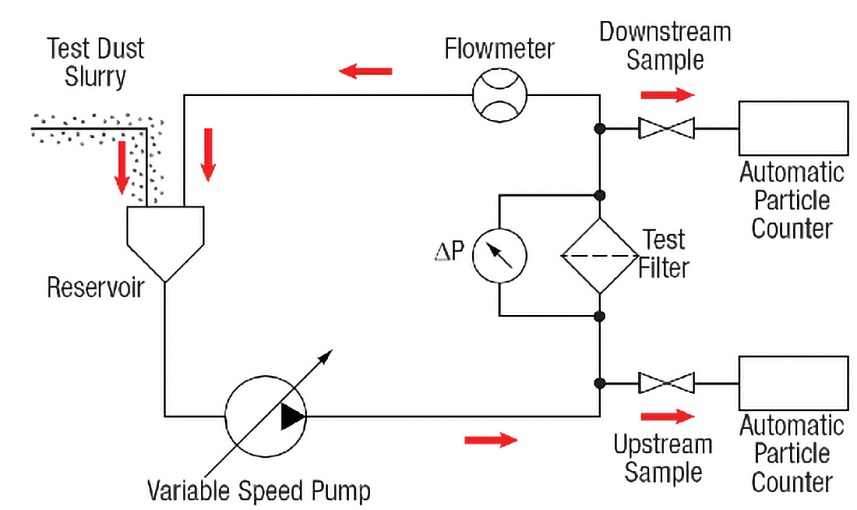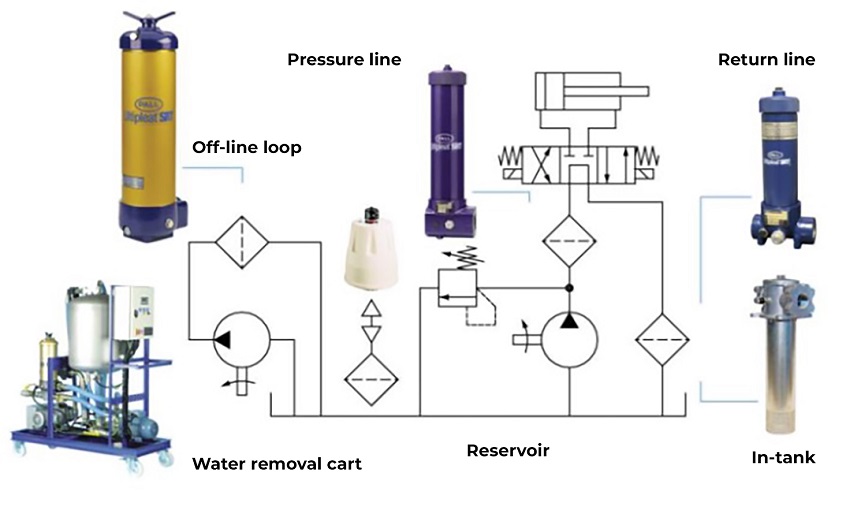



Contamination in hydraulic and lube system fluids is generally recognized as the single most important factor in reducing the reliability and longevity of the equipment. This article examines how measurement, monitoring, and control in industrial equipment can ensure sustained performance.
Manufacturing and processing industries are continuously looking at developments to enhance productivity while reducing costs and improving efficiencies, so they can stay one step ahead of their competitors.
Central to this is proper maintenance of equipment to ensure sustained performance and lengthened lifespan while minimising waste and energy consumption, which is becoming increasingly significant as industries strive to reduce their carbon footprint and environmental impact. Leading-edge filtration and separation technologies have the power to help achieve these goals.
Beyond protecting machinery and improving system performance there are also increasingly stringent government regulations around the control and disposal of pollutants and contaminants that necessitate the implementation of effective filtration to extend the life of fluids and other system components. As a result, we are now seeing a rise in the development of innovative, new technologies and solutions to improve operational output while protecting the future of the planet.
Particulate Contamination Contamination in hydraulic and lube system fluids is generally recognized as the single most important factor in reducing the reliability and longevity of the equipment. Failures of fluid power components or systems are more often than not related to an excessive amount of contamination.
Particulate contaminants enter a system in a variety of ways. There are built-in contaminants that are present in components when the system is assembled and these can include cylinders, fluids, hydraulic motors, reservoirs and valves.
Contaminants are also generated through wear mechanisms as the system operates, or from fluid breakdown. External ingression can also occur during reservoir breathing, or from passing through cylinder, bearing and other component seals.
In addition, contaminants can be introduced during scheduled maintenance sessions, as the equipment is disassembled and reassembled, and lubricating oils are topped up.
Careful monitoring It is critical that these particulate contaminants are carefully monitored and controlled. In lubricating and fluid power systems these ‘invisible’ contaminants are measured in microns (‘µm’), which represents one millionth of a metre. To put that in context, the smallest dot you can see with the human eye is 40 µm while the thickness of a human hair is 75 µm. With damaging particles typically smaller than 10 µm, system operators must rely on laboratory analysis or particle counting/monitoring methods to ensure particulate contamination is under control.
On-line particulate cleanliness monitoring, which does not require samples to be taken to a laboratory, delivers faster and more convenient results. It works by analysing a flow within the actual operational industrial process. It is often attributed to delivering more accurate results.
Off-line analysis, where a sample is extracted and examined off-site, means there is a higher possibility of introduction of environmental dirt into the sample bottle. Other false results may occur if there is inadequate cleaning of a sample bottle or insufficient flushing of sample valves.
There are several ways to monitor contaminants used across the industry. One of the most common is fluid analysis used by an automatic particle count (APC). APCs can analyse on-line or off-line fluid samples to get highly accurate particle count measurements. However, APCs are sensitive to water, air and gels, which can lead to inaccurate counts.
APC is the most prevalent method used by industry for particulate contamination analysis. It uses a technique whereby fluid containing particles is passed through a light beam. As the particles block the light, the light intensity received by a photo detector is reduced in proportion to the size of the particle.
Mesh blockage An alternative to APCs is contamination monitoring using a mesh blockage technique. Here, a sample of fluid is passed through different size meshes that capture particulate contaminants. The rate of differential pressure increase is converted into an ISO Code contamination level. While mesh blockage devices do not provide particle counts, they do deliver a very accurate representation of contamination levels. Mesh blockage devices are not negatively impacted by fluid opacity, or if there is water or air contaminants in the fluid.
Other methods include a patch test coupled with a fluid contamination comparator which can be deployed at point of use. They deliver rapid analysis of system fluid cleanliness levels in the field and are able to assist in identifying various types of contamination.
Ferrography is completed off-line and provides basic analysis on levels of ferrous and magnetic particles. However, it has a low detection rate of non-magnetic particles such as brass and silica. Spectrometry is also conducted off-line and is able to identify the type as well as the quantity of contaminants. Its drawback is that it can only detect particles above 5 µm.
Particle size Finally, gravimetric is conducted in a laboratory and is able to indicate total mass of a contaminant. However, it cannot distinguish particle size and is not suitable for moderate to clean fluids, i.e., below ISO 18/16/13. The ISO Cleanliness code references the number of particles greater than a predesignated size, measured in µm(c) in one mL of sample fluid.
Having the ability to determine accurate and reliable fluid cleanliness levels and detect abnormal contamination conditions is critical in ensuring the efficient and reliable operation of industrial processes and reducing costs related to unscheduled repairs and machinery downtime.
With a higher awareness of contaminants and their negative impact on industrial processes and the environment, the need to employ smart monitoring and measurement systems has come into sharp focus. Partnerships are emerging between filtration and technology companies to develop ‘smart’ filters that incorporate sensors capable of capturing data on contaminants and filter usage to help operators take early corrective action to improve plant performance and reduce maintenance and operating costs.
Water Contamination Water contamination in oil is another common contaminant in lube and hydraulic systems. Water contamination can lead to oil breakdown, such as additive precipitation and oil oxidation, reduced lubrication film thickness or an acceleration of metal surface fatigue and corrosion. Numerous issues arise from water contamination in fluids including additive depletion, reduced lubrication, microbial growth and a reduction in dielectric strength.
Sources of water contamination include heat exchanger and seal leaks, condensation of humid air, inadequate reservoir covers, or during equipment cleaning using a high-pressure hose. It is also important to understand the dissolved water contamination levels in fluids as temperature reduction can cause dissolved water to turn into free water.
There are a number of methods to measure levels of water within lubricants. These include the simple Crackle Test, heating the fluid and listening for a crackling sound that occurs as water boils off, which delivers a fast indicator of the presence of free water but does not permit detection below saturation.
FTIR is fast and inexpensive but does not permit detection below 0.1% (1,000 PPM). The Karl Fischer method is accurate at detecting low levels of water (10 – 1,000 PPM) but is not suitable for higher levels of water and accuracy can be affected by additives.
Content analysis Finally, water content analysis using a Capacitive Sensor (Water Sensor) is very accurate at detecting dissolved water at 0 – 100% saturation, but is unable to measure levels above 100%. The water sensor incorporates a probe that can be directly immersed in the fluid to monitor dissolved water content and temperature. Since water content above saturation is visible with the naked eye (cloudiness or visible water), measuring unseen dissolved water content is critical to trending water contamination levels and driving corrective action prior to the formation of free water.
Within a plant operation, customised contamination solutions have the power to improve system performance and reduce overall operating costs. Further investment must be directed towards delivering sustainable and cost-effective methods of measuring, monitoring and cleaning protocols. Now is the time for industry to take advantage of the huge leaps and bounds that are taking place within this increasingly critical field of innovation.






